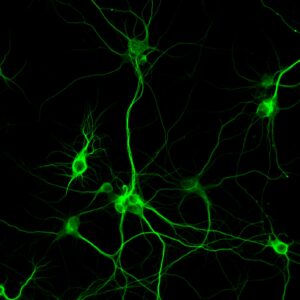Learn how to advance ex vivo and in vitro optogenetics applications with LED Illumination.
In recent years, LED microscope illuminators have revolutionised the field of fluorescence microscopy, offering numerous benefits, including convenience, cost-effectiveness, and sustainability.
But what you might not know is that LEDs are not just limited to traditional microscopy; they’re making waves in optogenetics as well.
You can find out more by reading our new white paper which explains:

1. How ex vivo and in vitro optogenetics experiments benefit from LED illumination
Optogenetic photostimulation via the microscope objective is often upstream of electrophysiology readings. In addition to this, LED illumination for widefield fluorescence imaging is often used to identify specific cells or perform calcium imaging measurements. Some experiments might also utilise IR-DIC imaging to provide morphological information, and transmitted LED illumination systems are ideal for this.
2. What TTL and analogue control of LED illumination means for optogenetics
LEDs offer high spectral and temporal control thanks to TTL and analogue control options, which benefit many aspect of optogenetics experiments. However, the exact level of control depends on the illumination system model…
3. Which LED illumination system is the best match for differing requirements
Choosing the right LED illumination system for specific optogenetics requirements can be daunting, given the plethora of options available. The white paper helps guide the reader through the CoolLED product range – whether the application demands advanced control and a wide selection of wavelengths, a cost-effective approach to stimulate a single opsin, or even combining optogenetics and Fura-2 calcium imaging.
The combination of optogenetics and the latest LED illumination technology is a powerful tool for researchers. To ensure experimental success, take the time to match specifications and application requirements – and of course we are always available to provide more information or answer any questions.
If time is short, take a look at our quick optogenetics video which covers the basics

CoolLED specialises in LED microscope lighting and, since our team of four introduced the first commercially available LED microscope illuminator in 2006, we have led the way in designing and manufacturing cutting edge LED Illuminators for Microscopes using the latest technology.





